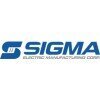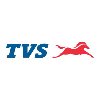Filter interviews by
CNC Automotive Interview Questions, Process, and Tips
CNC Automotive Interview Experiences
4 interviews found
I was interviewed in Mar 2023.

(7 Questions)
- Q1. What is the APQP process, PFMEA, , what is the MSA analysis
- Ans.
APQP is a process for developing new products, PFMEA is a risk assessment tool, and MSA is a statistical analysis method.
APQP (Advanced Product Quality Planning) is a structured process for developing new products or processes.
PFMEA (Process Failure Mode and Effects Analysis) is a risk assessment tool used to identify and prioritize potential failure modes in a process.
MSA (Measurement System Analysis) is a statistical...
- Q2. What is your role in the previous company ?
- Q3. Design a process flow for a given part
- Ans.
Design a process flow for a given part
Identify the part and its specifications
Determine the required manufacturing processes
Create a flowchart of the process steps
Include quality control checks at each step
Consider safety measures for workers and equipment
Optimize the process for efficiency and cost-effectiveness
- Q4. What is Voice of customers
- Ans.
Voice of customers refers to the feedback, opinions, and suggestions provided by customers about a product or service.
It helps companies understand customer needs and preferences
It can be collected through surveys, focus groups, social media, and customer support interactions
It is used to improve products and services and enhance customer satisfaction
Example: A restaurant may collect feedback from customers about the q...
- Q5. What is the output of PFMEA
- Ans.
PFMEA output is a prioritized list of potential failure modes, their causes, effects, and actions to prevent or mitigate them.
PFMEA stands for Process Failure Mode and Effects Analysis
It helps identify and prioritize potential failure modes in a process
The output includes a list of potential failure modes, their causes, effects, and recommended actions to prevent or mitigate them
The output is used to improve the proces...
- Q6. What is the machine capability study
- Ans.
Machine capability study is a process of evaluating the performance of a machine to determine its ability to produce products within specifications.
It involves collecting data on the machine's output and analyzing it statistically.
The study helps identify the sources of variation in the machine's output and determine if it is capable of producing products within the desired tolerance.
The results of the study can be use...
- Q7. What is gauge R & R and how its done
- Ans.
Gauge R&R is a statistical tool used to determine the measurement system's reliability and repeatability.
Gauge R&R involves measuring the same part multiple times using the same gauge by different operators.
It helps to identify the sources of variation in the measurement system.
The results are analyzed using ANOVA to determine the percentage of variation due to the gauge, operator, and part.
A high percentage of variati...
Interview Preparation Tips
Top CNC Automotive Senior Engineer Interview Questions and Answers
Senior Engineer Interview Questions asked at other Companies
I applied via Naukri.com
Interview Questionnaire
1 Question
- Q1. What is life goal
Interview Preparation Tips
Production Interview Questions asked at other Companies
I applied via Recruitment Consultant and was interviewed in Oct 2020. There were 3 interview rounds.
Interview Questionnaire
1 Question
- Q1. Related to maintenance and spm Machines.
Interview Preparation Tips
Maintenance Engineer Interview Questions asked at other Companies
Interview Questionnaire
3 Questions
- Q1. Technical Question
- Q2. Regarding Mechanical engg
- Q3. About Salary
Interview Preparation Tips
Duration: 50 minutes
Total Questions: 50
College Name: SRSIT Bangalore
CNC Automotive interview questions for popular designations
Top trending discussions






Interview questions from similar companies

I applied via Newspaper Ad and was interviewed before Jul 2020. There were 3 interview rounds.
Interview Questionnaire
4 Questions
- Q1. About salary and joining date
- Q2. Family details and dependent
- Q3. It was technical round
- Q4. Personal details
Interview Preparation Tips

Personal Assistant to Director Interview Questions & Answers
Nibav Liftsposted on 19 Jun 2022
I applied via Indeed and was interviewed in May 2022. There were 4 interview rounds.

(1 Question)
- Q1. Tel me abt urself. What do u know abt the Company.
(1 Question)
- Q1. How do u fit this role? U hav skills to meet this personal assistant role.
Given a test sheet. Usual aptitude questions asked
Interview Preparation Tips
Vry Worst owner or management. Am ibrite ?
So , nobody DON'T join for decent post like personal assistant or manager etc.,

Deputy Manager Interview Questions & Answers
Sigma Electric Manufacturing Corporationposted on 24 Nov 2020
I applied via Referral and was interviewed before Nov 2019. There was 1 interview round.
(2 Questions)
- Q1. Roles n responsibilities
- Q2. Work Experience

I applied via Approached by Company and was interviewed in Dec 2021. There were 3 interview rounds.

(1 Question)
- Q1. Ask about experience till date & achievement.
(1 Question)
- Q1. Ask about skill & documentary

Interview Questionnaire
14 Questions
- Q1. 1What is a reconciliation ? and reconciliation types?
- Ans.
Reconciliation is the process of comparing two sets of records to ensure their accuracy and consistency.
Reconciliation is a financial term used to verify and match transactions between two accounts or statements.
It helps identify discrepancies, errors, or missing entries in the records.
Types of reconciliation include bank reconciliation, account reconciliation, and intercompany reconciliation.
Bank reconciliation involv...
- Q2. What is a bank reconciliation?
- Ans.
Bank reconciliation is the process of comparing a company's bank statement with its own financial records.
It helps to identify any discrepancies between the two records.
It ensures that all transactions are accurately recorded in the company's books.
It involves matching the transactions on the bank statement with the transactions in the company's accounting system.
Any differences between the two records are investigated...
- Q3. What is the steps of reconciliation?
- Ans.
Reconciliation involves identifying and resolving differences between two parties.
Identify the differences between the parties involved
Communicate with the other party to understand their perspective
Find common ground and negotiate a solution
Agree on a plan of action to move forward
Follow up to ensure the plan is being implemented and effective
- Q4. What is accounts? What is important of accounts?
- Ans.
Accounts refer to financial records that track the flow of money in and out of a business. They are important for financial management.
Accounts are used to track financial transactions such as sales, expenses, and payments.
They help businesses keep track of their financial health and make informed decisions.
Accounts are important for tax purposes and for meeting legal requirements.
Examples of accounts include cash, acc...
- Q5. What about Bank reconciliation?
- Ans.
Bank reconciliation is the process of comparing a company's financial records with those of its bank to ensure accuracy.
Bank reconciliation involves matching transactions in a company's accounting records with those in its bank statement.
Any discrepancies are identified and investigated, such as outstanding checks or deposits in transit.
The goal is to ensure that the company's cash balance in its accounting records mat...
- Q6. What about ATM reconciliation?
- Ans.
ATM reconciliation is the process of ensuring that the amount of cash in an ATM matches the amount recorded in the bank's books.
ATM reconciliation involves comparing the cash dispensed by the ATM with the transactions recorded in the bank's system.
Any discrepancies are investigated and resolved to ensure that the ATM balance matches the bank's balance.
ATM reconciliation is typically done on a daily basis to ensure accu...
- Q7. What is error transaction..
- Ans.
Error transaction refers to a failed or incorrect transaction that did not complete successfully.
It can occur due to various reasons such as insufficient funds, incorrect account details, technical issues, etc.
Error transactions can result in loss of money or delay in processing.
Examples include failed ATM withdrawals, declined credit card payments, and unsuccessful online transfers.
- Q8. How to retified the error transaction..
- Ans.
Error transactions can be rectified by identifying the cause and taking appropriate corrective actions.
Identify the cause of the error transaction
Determine the appropriate corrective action
Implement the corrective action
Ensure the error transaction is properly documented for future reference
- Q9. Cash flow and fund flow statement.
- Q10. Accounts payable
- Q11. Accounts receivable
- Q12. Accounts Basic entry details.
- Q13. Balance sheet details
- Q14. Communicate the customer.
- Ans.
Communicating with customers is crucial for understanding their needs and providing excellent service.
Listen actively to their concerns and feedback
Use clear and concise language to avoid confusion
Be empathetic and understanding of their perspective
Provide timely and effective solutions to their problems
Follow up to ensure their satisfaction and loyalty

I applied via LinkedIn and was interviewed in Jul 2021. There were 3 interview rounds.
Interview Questionnaire
3 Questions
- Q1. About my previous company and the job role which I was doing.
- Q2. My region which I am looking after
- Q3. My Targets
Interview Preparation Tips
CNC Automotive Interview FAQs
Tell us how to improve this page.
CNC Automotive Interviews By Designations
Interview Questions for Popular Designations
CNC Automotive Interview Process
based on 3 interviews
Interview experience
Interview Questions from Similar Companies
CNC Automotive Reviews and Ratings
based on 41 reviews
Rating in categories
|
Quality Engineer
45
salaries
| ₹1.8 L/yr - ₹4.4 L/yr |
|
CNC Operator
11
salaries
| ₹1.6 L/yr - ₹3 L/yr |
|
QA Engineer
10
salaries
| ₹1.8 L/yr - ₹3 L/yr |
|
CNC VMC Operator
7
salaries
| ₹0.9 L/yr - ₹5.1 L/yr |
|
Production Engineer
7
salaries
| ₹2.2 L/yr - ₹3.5 L/yr |

Maruti Suzuki

Tata Motors

Mahindra & Mahindra

Ashok Leyland
- Home >
- Interviews >
- CNC Automotive Interview Questions












